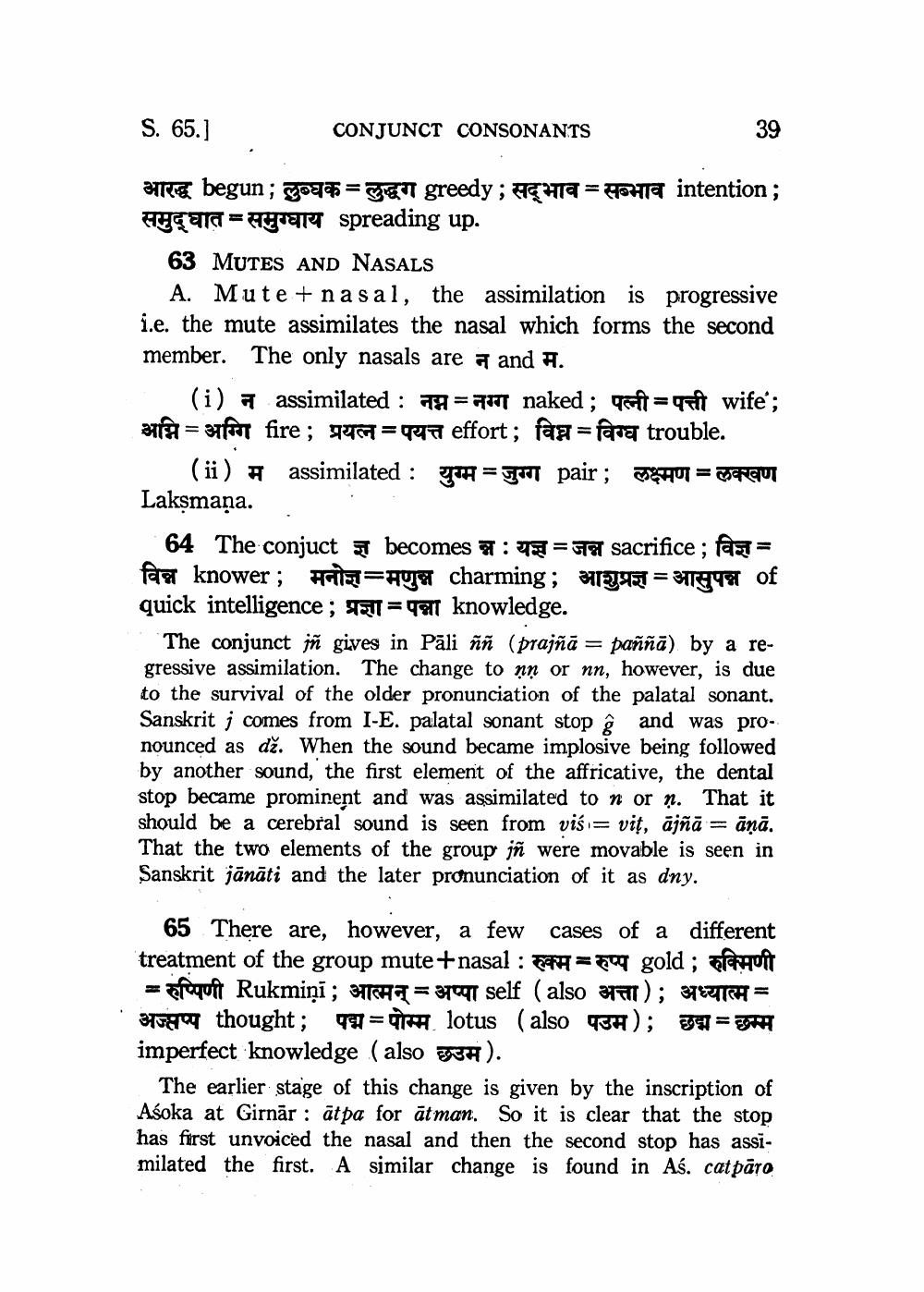________________
S. 65.]
CONJUNCT CONSONANTS
39
STT begun; goal= 36 greedy ; auta = 4341 intention ;
cara = gert spreading up. 63 MUTES AND NASALS
A. Mute + nasal, the assimilation is progressive i.e. the mute assimilates the nasal which forms the second member. The only nasals are a and H.
(i) न assimilated : नग्न = नग्ग naked ; पत्नी = पत्ती wife'; ang = effor fire ; TT =P47 effort; fag=falsa trouble.
(ii) H assimilated : a = or pair; U = Shau Lakṣmaṇa..
64 The conjuct 7 becomes : 4 = sacrifice; fas= fare knower; HIE=AUA charming; y = 3474147 of quick intelligence ; 451 = Te knowledge. | The Conjunct % gives in Pāli ñã (Prajñā = pañoä) by a regressive assimilation. The change to nn or nn, however, is due to the survival of the older pronunciation of the palatal sonant. Sanskrit j comes from I-E. palatal sonant stop ê and was pronounced as dž. When the sound became implosive being followed by another sound, the first element of the affricative, the dental stop became prominent and was assimilated to n or ạ. That it should be a cerebral sound is seen from viś= viț, ajñā = āņā. That the two elements of the group jñ were movable is seen in Sanskrit jānāti and the later pronunciation of it as dny.
65 There are, however, a few cases of a different treatment of the group mute+nasal : रुक्म रुप्प gold ; रुक्मिणी
= requft Rukmiņi; 371HT=3709 self (also 7); 371h = 378 thought ; et = lotus (also 95H); 3 = 54 imperfect knowledge (also ESH).
The earlier stage of this change is given by the inscription of Ašoka at Girnār : ātpa for ātman. So it is clear that the stop has first unvoiced the nasal and then the second stop has assimilated the first. A similar change is found in Aś. catpāro




